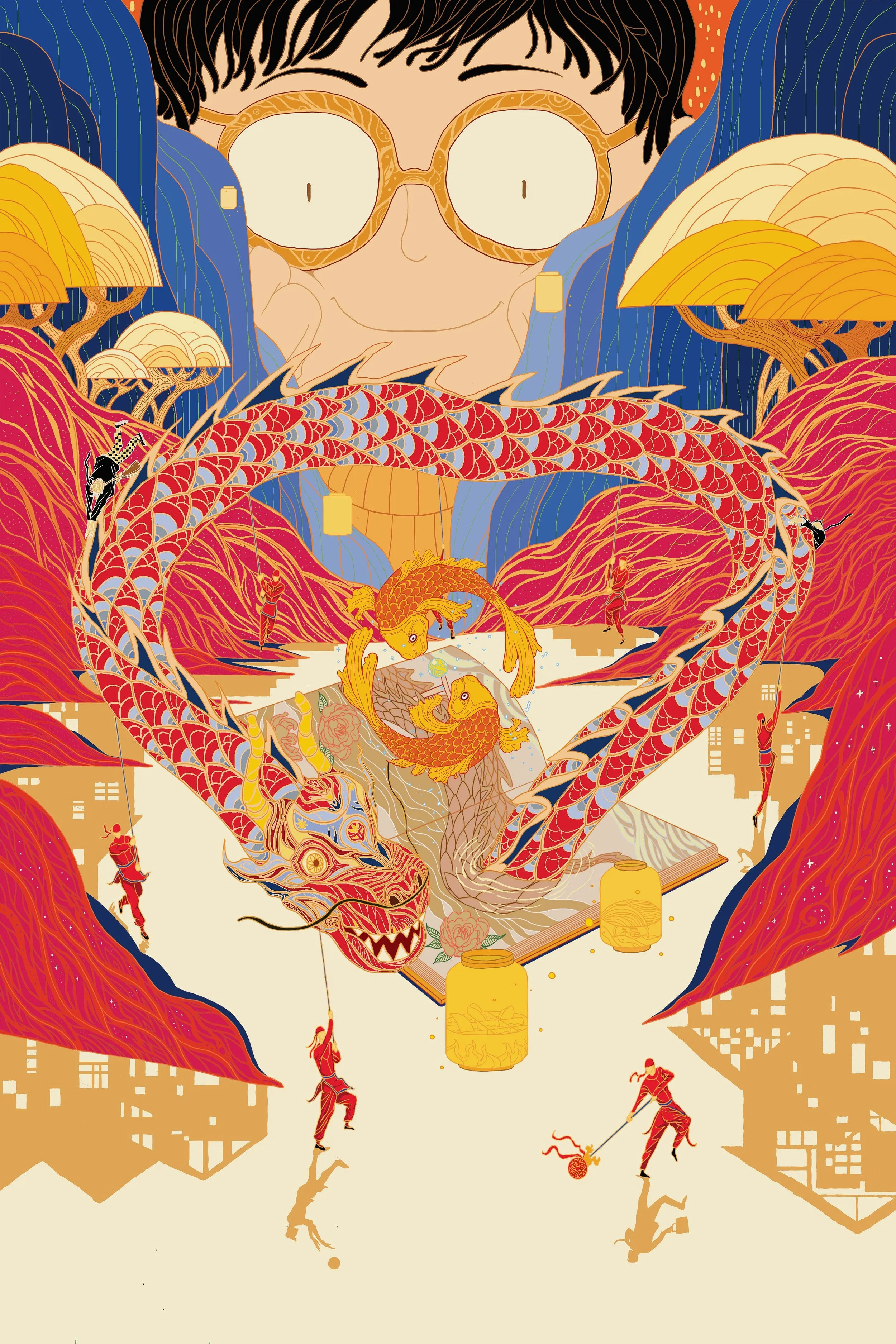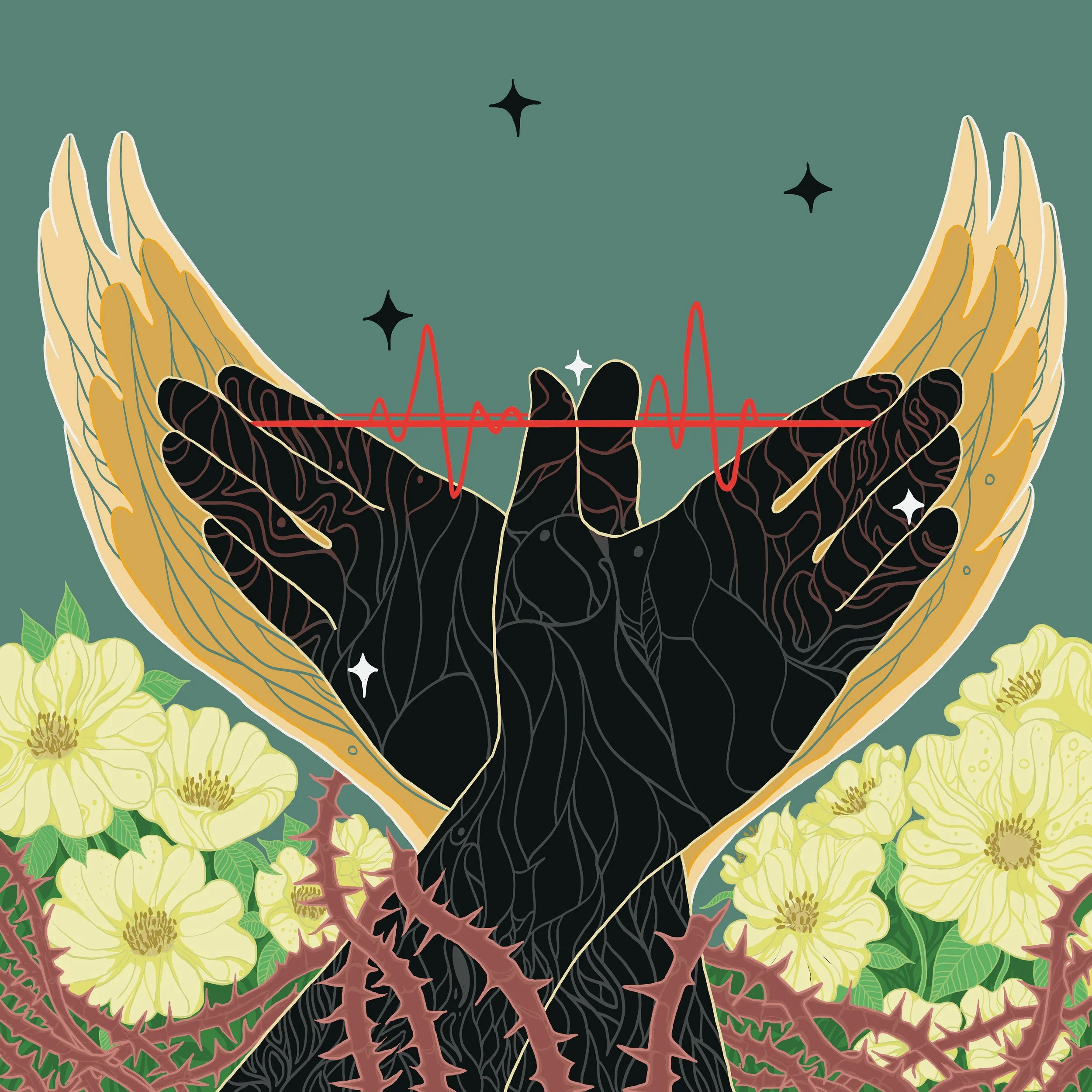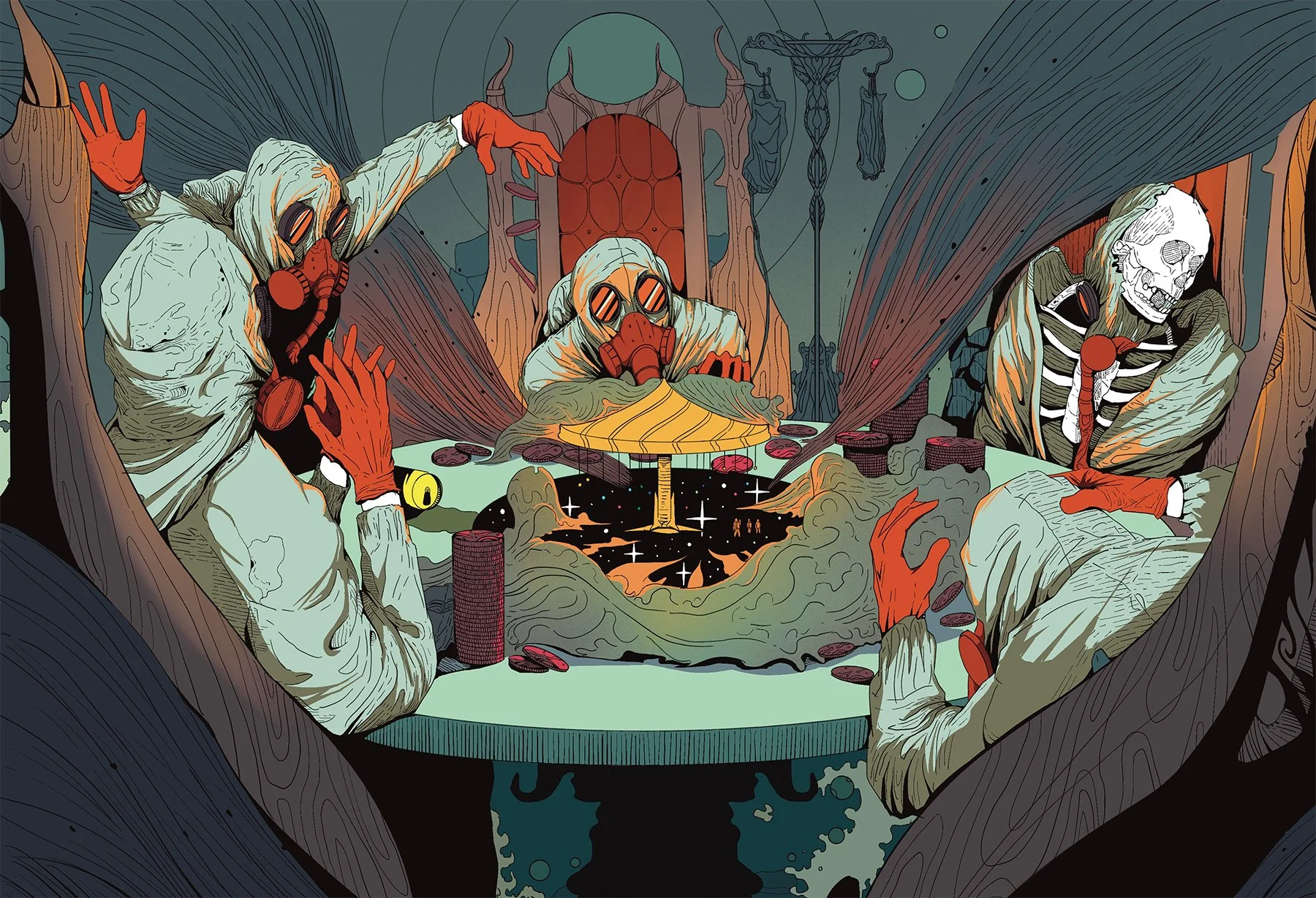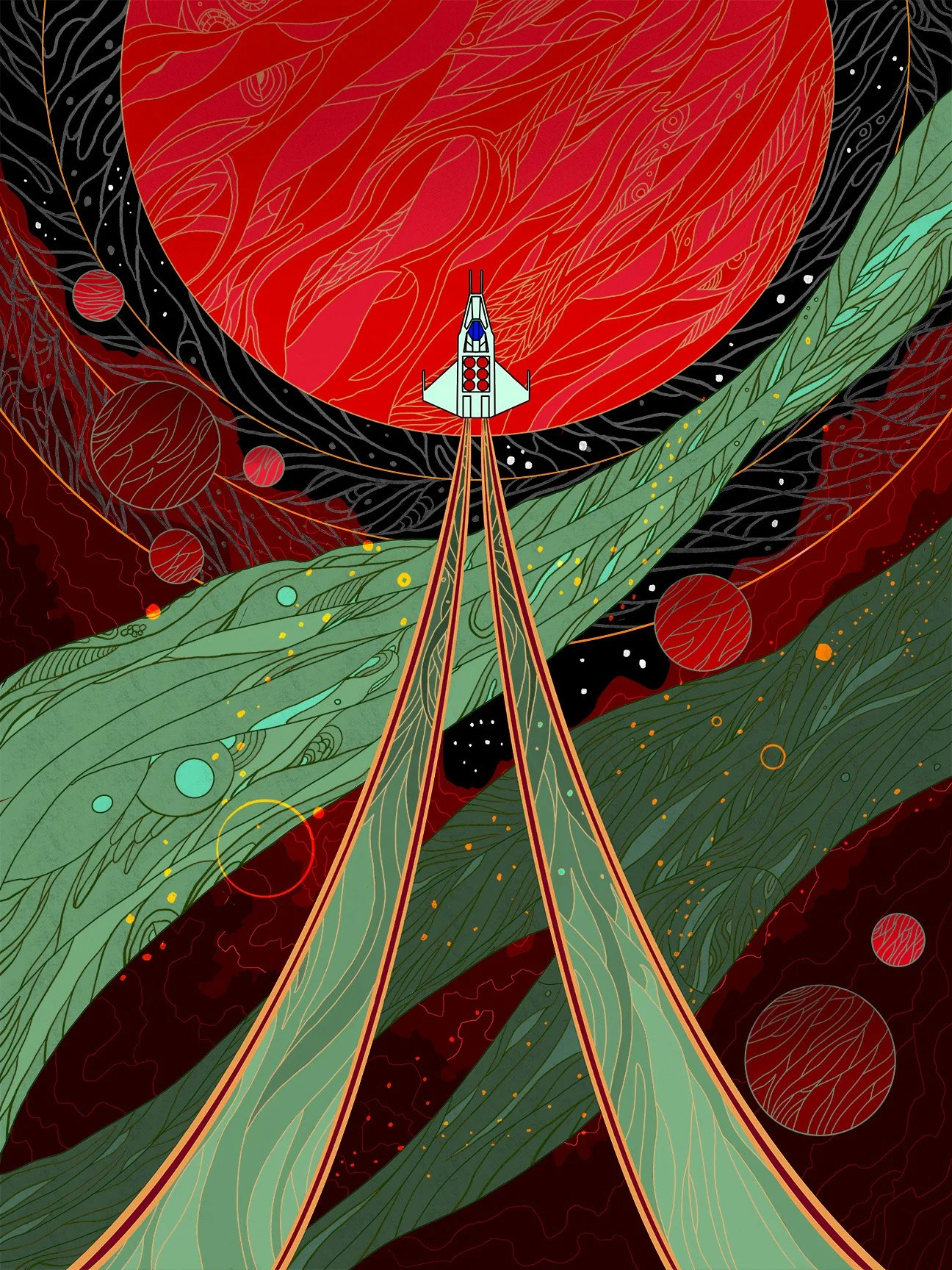“A Fantastical Space to Escape Reality”: Yuanhao Tang on the Power of Illustration
By Cansu Waldron
Yuanhao Tang is an illustrator known for his bold line work, flat colors, and distinctive storytelling flair. Working primarily in the book and editorial illustration markets, his art combines a sharp graphic sensibility with thoughtful, conceptual depth. Rooted in a lifelong love of comic books; beginning with a well-worn Batman issue from his childhood, Yuanhao’s art practice started with years of traditional drawing and painting before evolving into the digital realm.
Now working digitally, Yuanhao continues to draw inspiration from the vibrant personalities and unexpected stories that surround him. Each piece balances clarity and emotion, merging narrative richness with visual simplicity.
We asked Yuanhao about his journey, inspirations, and digital illustration practice.
Can you tell us about your background as a digital artist? How did you get started in this field?
I began by studying traditional drawing and painting throughout junior and senior high school, driven by my deep love of comic books and sequential art. The first comic I ever read was a Batman issue, although its title escapes me now, and my grandparents’ shelves were filled with bundles of sequential art that I would pore over. This passion naturally led me to invest significant time in art as a path to college; at that stage, admission to most art institutions required rigorous training in drawing and painting. Digital art entered my practice later. It wasn’t until I had been in college for some time that it captured my attention and I realized illustration could be a viable profession. Transitioning from traditional media to digital illustration was both challenging and rewarding; it required me to adapt but also opened up exciting new possibilities that continue to shape my work today.
You’ve mentioned that the people and events around you inspire your work. Can you share a recent encounter that sparked an illustration?
There is a great deal I could say in response to this question because so much is happening in the world right now. Much of my work has historically been dark and emotionally informed by client conversations as well as feedback from friends and peers. In my artist statement I note that I want my illustrations to offer a fantastical space where audiences can briefly escape reality and feel a sense of positivity. This has been especially true of commissioned pieces that go out into the world.
I am someone who is deeply affected by my environment, which is one reason I have consciously shifted my approach. Starting last year, I committed to creating more uplifting illustrations, including in my personal projects, to discover and highlight the positive within the negative. For example, I recently produced a piece for a local POC community experiencing health issues caused by racism. Although the subject was heavy and the reality harsh, most viewers recognized the hopeful message embedded in the work. At its core, that piece was about “thriving together.”
Do you sketch by hand first, or go straight into digital? What does your workflow look like from idea to finished piece?
I keep a physical sketchbook and use it extensively during the initial stages of a project. I also create digital sketches when appropriate, depending on my location and the tools available. For commissioned work, my process is consistent: I first discuss requirements with the client, develop a series of drafts, and once a direction is approved, progress to more detailed compositions through an iterative review.
For personal pieces, I allow greater flexibility. Sometimes I refine the line work even at the thumbnail stage, while other times I deliberately retain the spontaneity of my initial sketches, as their line quality can equal that of finished work. This freedom to explore enables unexpected discoveries and happy accidents, which often lead to fresh ideas while still remaining true to my visual style.
Working in book and editorial markets, you often create for someone else’s words. How do you balance your own voice with the story you’re illustrating?
Readers form their own interpretations as they read, and I don’t want my illustrations to restrict that experience. My role is to offer an additional perspective that makes them think, “Oh, it could also look like this!” I focus on conveying emotion, building tension through line and color, and creating a parallel world that grows out of the text. I adhere closely to the writing itself, but wherever the text leaves space I bring in my own voice as a fellow reader.
Balancing that voice can be challenging, especially when a book already has successful TV or film adaptations that predate your work. As an illustrator you don’t want to produce a replica of what already exists; you want to keep it distinctive. Sometimes the most effective approach is to construct an entirely new visual world within the limits of the original material. I encountered exactly this situation recently while creating a personal promotional series of book illustrations.
Is there a dream book, article, or publication you’d love to illustrate for?
Oh yes, absolutely. I am a devoted fan of Wuxia novels, a genre that originated in ancient China. I could talk about it endlessly if you asked me what it is; for many Chinese audiences, it holds a place comparable to Harry Potter or Star Wars. The Legend of the Condor Heroes is my dream book to illustrate. I noticed that The Folio Society published an edition years ago under a different title with stunning illustrations, and I hope to have the opportunity to work on it someday. Penguin Random House, HarperCollins, Saga Press and The Folio Society are all major names to me, and I would also love to collaborate with publications closer to home.
Can you tell us about some of your favorite pieces or a past or upcoming project? What makes them special to you?
I am currently developing a self-initiated book illustration project that I plan to present to art directors and publications once it is complete. It is based on a Wuxia novel, a genre I have been passionate about since childhood. Creating illustrations for this series has been a long-held aspiration, and this project allows me to realize that vision while showcasing my approach to narrative and visual storytelling.























